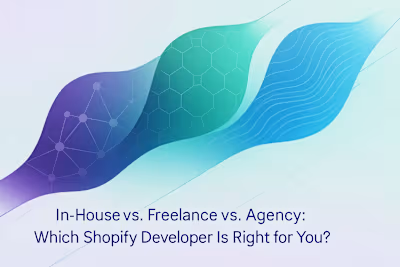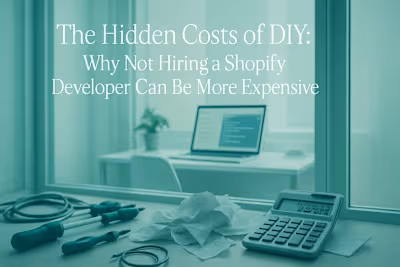5 Signs It’s Time to Hire an Expert Shopify Developer

5 Signs It's Time to Hire an Expert Shopify Developer
Sign 1: Your Store's Performance and Speed Are Declining
The Impact of Slow Load Times on Sales
Common Causes of a Slow Shopify Store
Sign 2: You Need Custom Features Your Theme Can't Handle
Beyond Off-the-Shelf Solutions
Examples of Custom Functionality
Sign 3: You're Spending More Time on Technical Issues Than Your Business
The Hidden Cost of Being Your Own IT Support
When Minor Glitches Become Major Headaches
Sign 4: Your Sales Have Plateaued and You Want to Scale
Optimizing for Conversion and Growth
Preparing Your Store for Higher Traffic
Sign 5: You're Unhappy with Your Store's Design and User Experience
When Your Brand Outgrows Your Website
Improving Navigation and the Customer Journey
Making the Decision to Invest in Professional Help
References
5 Signs It's Time to Hire an Expert Shopify Developer
Sign 1: Your Store's Performance and Speed Are Declining
The Impact of Slow Load Times on Sales
Common Causes of a Slow Shopify Store
Sign 2: You Need Custom Features Your Theme Can't Handle
Beyond Off-the-Shelf Solutions
Examples of Custom Functionality
Sign 3: You're Spending More Time on Technical Issues Than Your Business
The Hidden Cost of Being Your Own IT Support
When Minor Glitches Become Major Headaches
Sign 4: Your Sales Have Plateaued and You Want to Scale
Optimizing for Conversion and Growth
Preparing Your Store for Higher Traffic
Sign 5: You're Unhappy with Your Store's Design and User Experience
When Your Brand Outgrows Your Website
Improving Navigation and the Customer Journey
Making the Decision to Invest in Professional Help
References
Posted Jul 4, 2025
Is your Shopify store struggling to keep up? Learn the 5 key signs that indicate it's time to hire a professional developer to fix issues, scale your business, and boost sales.







